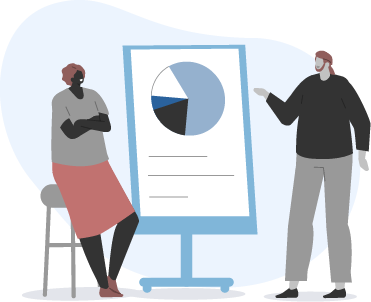Hooking your audience: tips for presenting your research
Advice from the winner of the 3-minute-thesis competition
How can you approach pitching your research to an audience who are non-specialists? Why is research communication important in the first-place? If you had three minutes to get people to understand your research, what facts and figures would you draw out to hook your audience?
This is the challenge set by Vitae in their 3-minute-thesis (3MT) competition each year, an event that Taylor & Francis are proud to sponsor. In this blog, we catch up with previous People’s Choice Winner, Euan Doidge, to hear his top tips.
Watch his winning presentation below and read on for his valuable advice for presenting your research.
Tip 1: “You can communicate using more colorful language, conjuring images and using analogies that will better resonate with an audience”
Perhaps the biggest driver to enter the 3MT competition was the opportunity to present research in a way that you can’t in a peer-reviewed research journal. In traditional research outlets, you’re limited to using specific and scientific language. The 3MT presentations are a chance to be slightly ‘cheeky’ – you can communicate using more interesting and colorful language, conjuring images and using analogies that will better resonate with an audience.
Use a key topic of interest in the news, such as the pandemic. Link the research to the topic of interest can help grab your audience’s attention more quickly and help them put the research in a context they understand.

Post information
Related posts
Tip 2: “I started off preparing my presentation by listing all the ‘fun-facts’ I knew about gold – the impressive and memorable facts and figures that would hook an audience.”

I jotted down all the analogies I could think of to explain my research, and then ‘over-wrote’ a script that could be cut-down, edited and refined to give a streamlined block of text that had the minimum number of words to tell the same story.
With the outline in place, the focus then became how to deliver it – what inflections or emphasis to place on certain words, what gestures to make at certain points, when to pause, using and answering rhetorical questions, and of course incorporating puns! I then have my research group to thank for enduring every possible permutation of these when practicing the presentation.
Tip 3: “Try to identify the take-home message, and make sure the story gets to that point.”
When presenting your research, I think it’s useful to remember that you don’t have to talk about absolutely everything you’ve done or discovered. It’s sometimes better to talk about less material that has a better story. Try to identify the take-home message, and make sure the story gets to that point.

Tip 4: “You should throw yourself at any opportunity to present”

You should throw yourself at any opportunity to present – every time you do it you’ll learn something new and improve. It can be intimidating to begin with, but eventually you’ll be more at ease and appreciate your work and the opportunity to share it.
Throughout my PhD I’ve done a lot of undergraduate-level teaching. This has been particularly interesting, learning to pitch concepts of varying degrees of difficulty in simple ways to audiences of differing experiences and knowledge. I find it useful to contextualize these ideas in terms of my own research to show their relevance or application, but that’s only possible if you can make your own research understandable, too.
Tip 5: “It’s interesting to see […] how far these videos have travelled”

The 3MT competition is a unique opportunity to share your work in a particularly engaging and memorable way. This is a chance to be a little more flexible and adventurous with language to communicate complex concepts – something that you don’t get the freedom to explore elsewhere. It can feel risky taking your work to a non-specialist audience, but taking time to think about simple ways of communicating the impact of your work can only help you appreciate what you’re doing more.
It’s been great getting to share my work with an audience and engage in discussions afterwards – it’s always nice to see what people’s thoughts are on these presentations, as well as see how far these videos have traveled based on the emails received.
@EuanDoidge
Euan completed his undergraduate studies with a Master of Chemistry degree at the University of Edinburgh. He was awarded a prestigious Principal’s Career Development Scholarship to stay at the university and pursue a PhD in Inorganic Chemistry, and has recently been awarded a Fellowship of the Higher Education Academy. Euan investigates the use of solvent extraction for metal recovery, and has studied a variety of metals across the periodic table. From mining nickel from rocks, to recycling gold from waste electronics, his research aims to develop and better understand chemical separation processes for more efficient and environmentally friendlier metal production.
Where to next?
If you’ve found these tips helpful make sure you look at:
Research impact free guide – a straightforward, free, in-depth guide to help you build your research impact.
Our Insights newsletter – the latest news, tips, and resources delivered straight to your inbox.